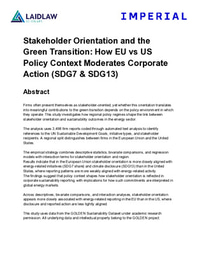Mapping the Disparities in How We Regulate Air
Air quality regulation in the United States is often hailed as a public health success story. The 1970 Clean Air Act (CAA) established the first National Ambient Air Quality Standards (NAAQS) and is credited with preventing millions of premature deaths and significantly reducing key pollutants nationwide. However, while the CAA has succeeded at driving significant reductions at the regional level, it is insufficient in ensuring quality standards are met at a smaller (e.g., neighborhood) scale. Frontline communities, typically composed of low-income residents and people of color, often are co-located with significant local emission sources. Recent research has shown important disconnects between the impact of air quality on quality of life and health defined by those who bear the brunt of pollution, compared to how it is defined by NAAQS.
In Providence, an asthma “hotspot”, these health inequities are most apparent in the Port-surrounding area neighborhoods such as South Providence and Washington Park. The Breathe Providence Project utilizes a low-cost hyper-local monitoring network to document and combat these disparities in air pollution at the neighborhood-level scale. The team operates 25 monitors across the city, strategically located atop schools, recreation centers, libraries, and other community centers to best serve priority areas facing disproportionate health-burdens. This project utilizes legal and scientific literature reviews in conjunction with Breathe Providence data to understand how air pollution exposure and health disparities can exist even when polluting facilities are “in compliance.” Furthermore, the project aims to address the gap between the experience of air quality and how air pollution is monitored.
Using facility-level violation records and EPA demographic indicators, I conducted a spatial and statistical analysis of enforcement activity across census tracts. This project drew upon participatory GIS outputs, RIDEM enforcement data, and power-analysis frameworks to assess the inequitable distribution of environmental benefits and burdens in the places where residents of Providence live, work, and play. Findings reveal significant disparities in how air quality is experienced across Providence, particularly in neighborhoods adjacent to the Port. Despite regulatory compliance at the facility level, localized monitoring and community-participatory data demonstrate persistent exposure to harmful pollutants. Residents consistently identify sources of pollution and articulate their health impacts, highlighting a disconnect between official air quality assessments and lived experience. This project underscores limitations in current compliance frameworks and emphasizes the importance of integrating experiential data to more accurately assess and address environmental health inequities.



![[Research Report] 3D FRESH bioprinting in regenerative medicine: a review of recent advancements and clinical applications](https://images.zapnito.com/cdn-cgi/image/metadata=copyright,format=auto,quality=95,width=256,height=256,fit=scale-down/https://images.zapnito.com/users/879527/documents/301181/0545428e-237b-4e9c-91f0-4e08dc992479-med.jpg)
Please sign in
If you are a registered user on Laidlaw Scholars Network, please sign in